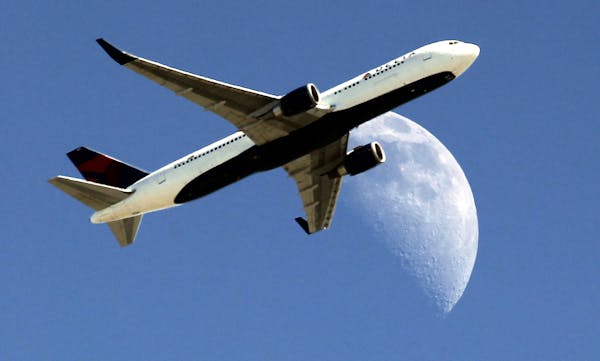Direct flights to China, long a blip on Minnesota's radar, are sending a stronger signal.
The leader of the biggest airline serving the state, Delta Air Lines chief Richard Anderson, told an audience in Minneapolis on Tuesday that it is considering another nonstop flight to Asia.
Executives at Minneapolis-St. Paul International Airport — and many other business and political leaders in the region — want it go to China. Currently, Minnesotans who fly to China must connect through Delta's hub in Tokyo or fly to another U.S. city, such as nearby Chicago or Detroit, for a nonstop on Delta or other airlines.
"My hope is that we are going to be able to have another nonstop into Asia in the next three to five years," Anderson said, speaking to the MSP Foundation's State of the Airport luncheon.
Delta is replacing its fleet of Boeing 747s with Boeing's new, fuel-efficient 787 aircraft and Airbus A350s. "That fleet is going to unlock longer-haul markets," Anderson said.
While Anderson did not address China directly, Jeff Hamiel, executive director and chief executive of the Metropolitan Airports Commission, said in an interview that China is his focus. The country is the world's most populous country and second-largest economy. And it is Minnesota's second-largest trading partner after Canada.
"We are in negotiations with Delta now, and I would love a flight to China," Hamiel said. "We are obviously discussing all the major markets, including Shanghai, Beijing and Hong Kong."
Atlanta-based Delta currently operates four transoceanic routes from MSP: to Amsterdam, London, Paris and Tokyo.
The Mall of America is among the list of local entities eager for direct flights to China.
Mall officials have recently beefed up their marketing efforts in China in an attempt to lure more visitors from the region. Between 50,000 and 100,000 Chinese tourists visit the Mall of America annually, but executives consider the lack of a direct flight from China to be an obstacle.
"China is a huge market, as we know, and we really hope this happens," said Dan Jasper, vice president of public relations for the Mall of America.
However, with the consolidation of the airline industry, the competition is steep among U.S. hub airports for flights to and from China.
"Everyone wants service to China, and if they already have it, they want more frequency," said George Hamline, an airline analyst in Virginia.
The U.S. and Chinese governments control the number of routes between the two countries and award them to carriers. After they reached a new agreement in 2007, the number of routes gradually expanded from 10 daily nonstops to around 30 now. Because they are so limited, airlines in the two countries pressure their respective governments for them.
United Airlines flies nine, while Delta and American Airlines each have four. Air China has seven, and a handful of other airlines have one to three.
Detroit is often considered the primary competitor to MSP for Delta's affections and attention, and the Michigan city already boasts direct flights to both Shanghai and Beijing.
"MSP is still a very large hub for Delta and international service is best sustained at airports with hub operations, so I think Minneapolis-St. Paul can support at least a modest China route along with Detroit," Hamline said.
Anderson said that, regardless of what Asia route it opens, Delta anticipates increasing total seat capacity for the Twin Cities market by about 8 percent over the next five years.
Kristen Leigh Painter • 612-673-4767
